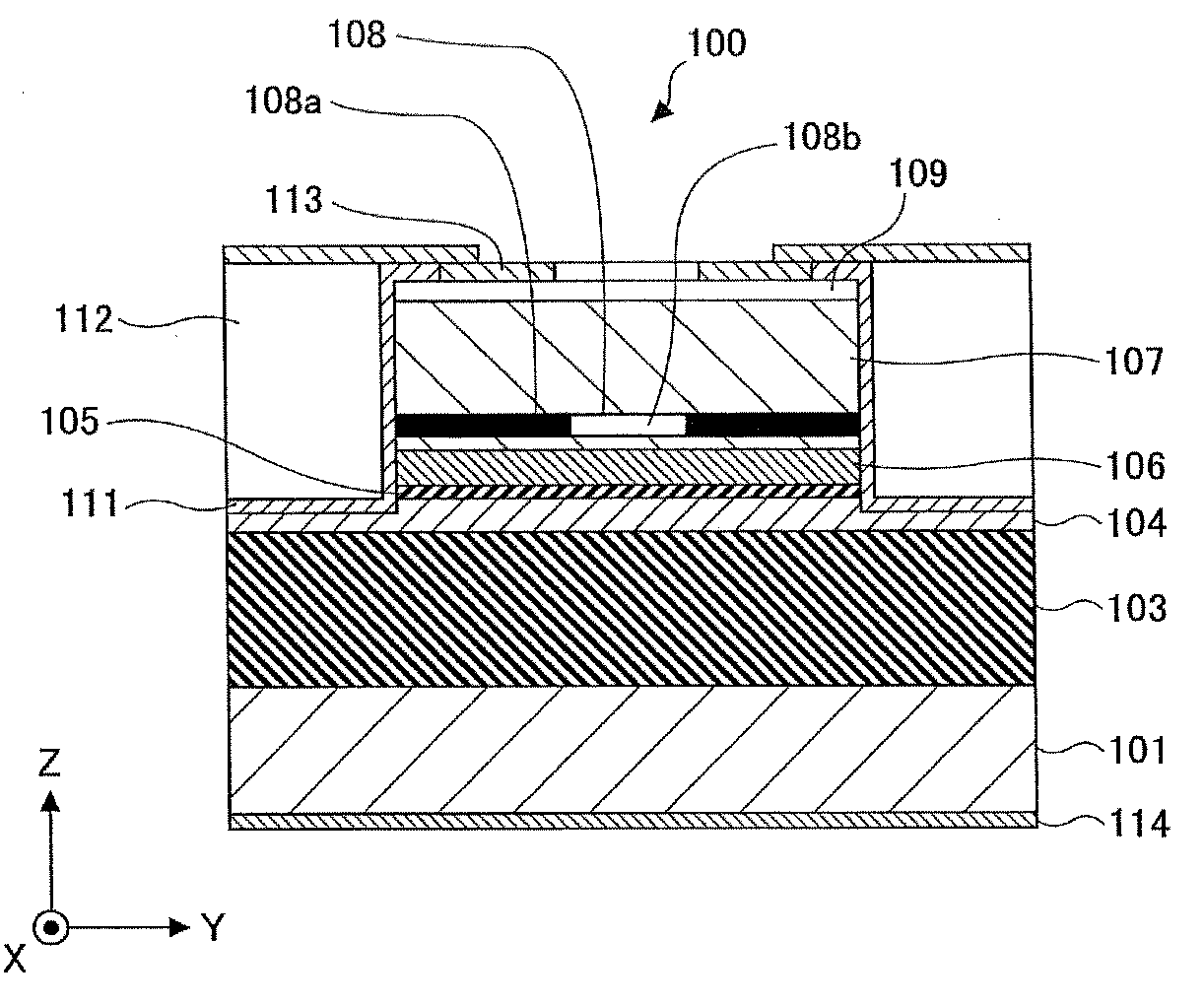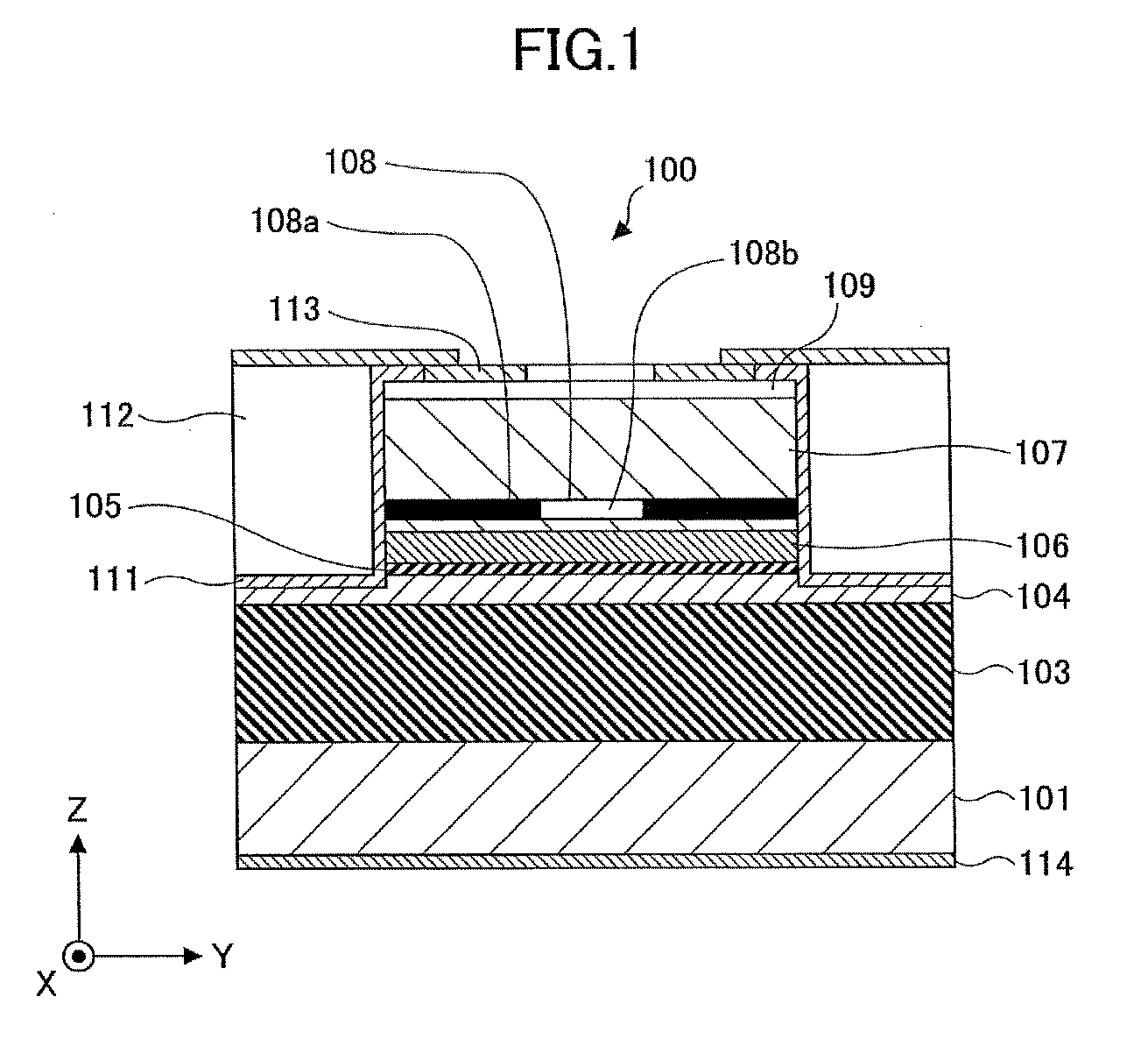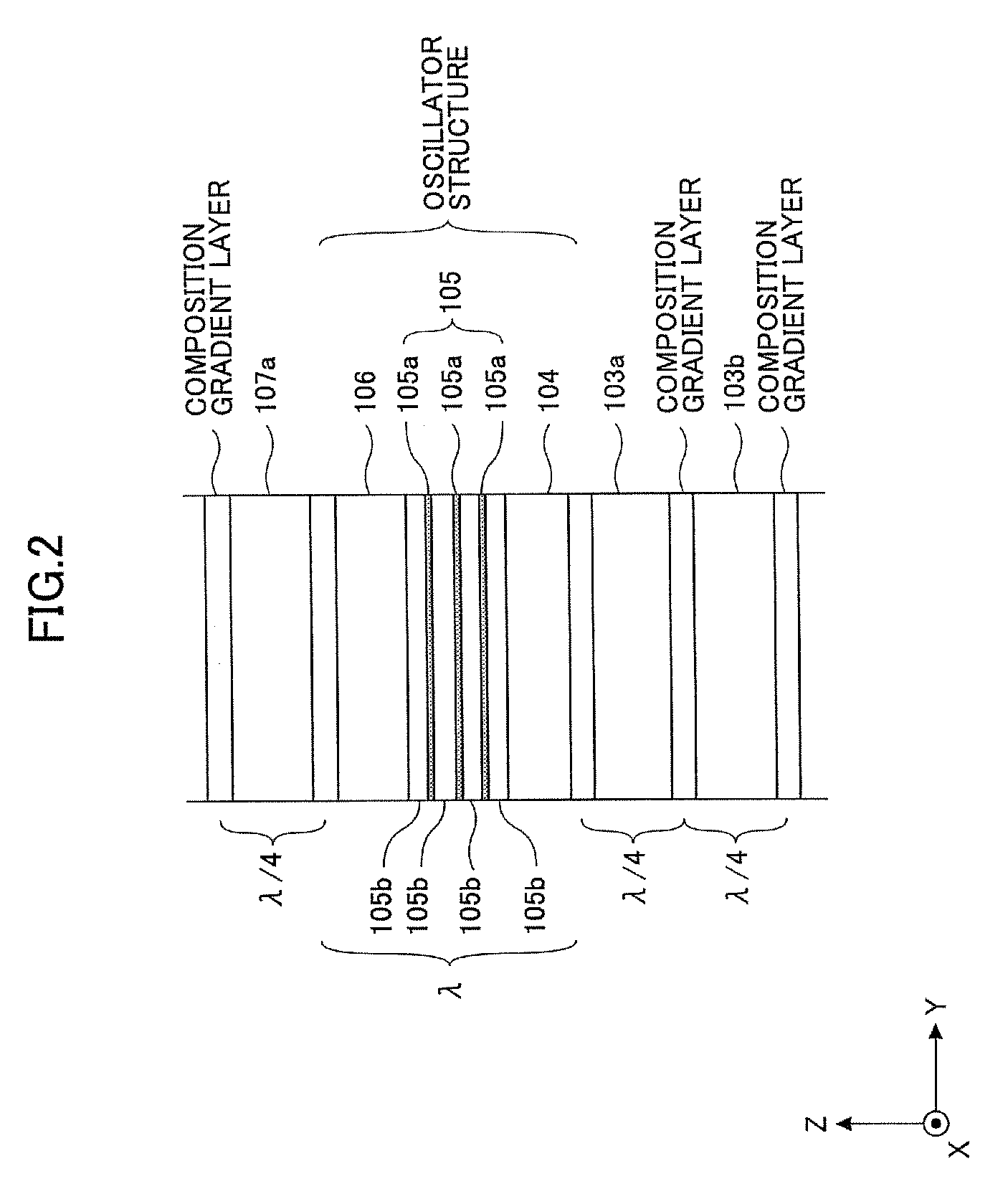Surface emitting laser, surface emitting laser array, optical scanning device,image forming apparatus, optical transmission module and optical transmission system
- Summary
- Abstract
- Description
- Claims
- Application Information
AI Technical Summary
Benefits of technology
Problems solved by technology
Method used
Image
Examples
first embodiment
[0144]FIG. 1 is a cross-sectional diagram schematically showing a surface emitting laser 100 according to a first embodiment of the present invention. It should be noted that the Z-direction in the figures is the direction parallel to the laser oscillation direction, and X-direction and Y-direction are orthogonal to each other and in the plane orthogonal to the Z-direction.
[0145]The surface emitting laser 100 is designed to oscillate at the wavelength band of 850 nm. As shown in FIG. 1, in the surface emitting laser 100, a lower semiconductor DBR 103, a lower spacer layer 104, an active layer 105, an upper spacer layer 106, an upper semiconductor DBR 107, and a contact layer 109 are sequentially laminated in this order on a substrate 101. In the following, it should be noted that a laminated structure including plural semiconductor layers may be called a “laminated body” for convenience. FIG. 2 is an enlarged view of the vicinity of the active layer 105, and FIG. 3 is a partially-en...
second embodiment
[0194]FIG. 1 is a cross-sectional diagram schematically showing a surface emitting laser 100 according to a second embodiment of the present invention.
[0195]The surface emitting laser 100 is designed to oscillate at the wavelength band of 780 nm. As shown in FIG. 1, the surface emitting laser 100 includes semiconductor layers such as a substrate 101, a lower semiconductor DBR 103, a lower spacer layer 104, an active layer 105, an upper spacer layer 106, an upper semiconductor DBR 107, and a contact layer 109, laminated with each other. In the following, it should be noted that a laminated structure including plural semiconductor layers may be called a “laminated body” for convenience. FIG. 2 is an enlarged view of the vicinity of the active layer 105, and FIG. 7 is a partially-enlarged view of the upper semiconductor DBR 107.
[0196]The substrate 101 is a single-crystal substrate made of n-GaAs.
[0197]The lower semiconductor DBR 103 includes 40.5 pairs of a low refractive index layer 1...
third embodiment
[0250]FIG. 17 schematically shows a configuration of a surface emitting laser 200 according to a third embodiment of the present invention.
[0251]The surface emitting laser 200 is designed to oscillate at the wavelength band of 780 nm. As shown in FIG. 17, in the surface emitting laser 200, a lower semiconductor DBR 203, a lower spacer layer 204, an active layer 205, an upper spacer layer 206, an upper semiconductor DBR 207, and a contact layer 209 are sequentially laminated in this order on a substrate 201. FIG. 18 is an enlarged view of the vicinity of the active layer 205, and FIG. 19 is a partially-enlarged view of the upper semiconductor DER 207.
[0252]The substrate 201 is a single-crystal substrate made of n-GaAs.
[0253]The lower semiconductor DBR 203 includes 40.5 pairs of a low refractive index layer 203a made of n-AlAs and a high refractive index layer 203b made of n-Al0.3Ga0.7As. Further, a composition gradient layer is interposed between the adjacent refractive index layers ...
PUM
 Login to View More
Login to View More Abstract
Description
Claims
Application Information
 Login to View More
Login to View More - R&D
- Intellectual Property
- Life Sciences
- Materials
- Tech Scout
- Unparalleled Data Quality
- Higher Quality Content
- 60% Fewer Hallucinations
Browse by: Latest US Patents, China's latest patents, Technical Efficacy Thesaurus, Application Domain, Technology Topic, Popular Technical Reports.
© 2025 PatSnap. All rights reserved.Legal|Privacy policy|Modern Slavery Act Transparency Statement|Sitemap|About US| Contact US: help@patsnap.com



